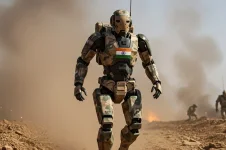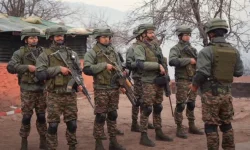- Views: 1K
- Replies: 7

The Indian Army is making strides towards integrating cutting-edge technology into its battlefield operations.
In a move aimed at revolutionizing casualty evacuation, the Army is exploring the development of a Battlefield Extraction-Assist Robot (BEAR).
This innovative system promises to transform the way injured soldiers are rescued, providing swift and safe extraction from dangerous zones.
Spearheading Innovation
The Indian Army's in-house research and development wing, the Army Design Bureau (ADB), will spearhead the BEAR project.Recognizing the potential benefits of collaboration, the ADB may engage with private sector companies to access specialized expertise and accelerate the robot's development.
The BEAR: Function and Form
Though the BEAR's exact capabilities are still being refined, it's expected to be either remotely controlled or function with a degree of autonomy. This design emphasis ensures that medical personnel can safely operate the robot from a distance, thus avoiding unnecessary exposure to battlefield risks.The core objective of the BEAR will be to traverse complex battlefield environments and retrieve wounded soldiers. The system's focus is on timely evacuation, ensuring that casualties are transported to the nearest medical aid station within the critical "golden hour," a window that often determines survival and recovery outcomes.
Transforming Battlefield Medicine
The integration of the BEAR into the Indian Army has the potential to redefine casualty evacuation procedures.Its ability to quickly and safely extract injured soldiers can lead to a decrease in mortality rates and improved long-term medical prognoses for wounded personnel.
A Collaborative Endeavor
The development of the BEAR underscores the Indian Army's dedication to harnessing technological advancements for the protection and preservation of life.By partnering strategically with experts in the fields of robotics and artificial intelligence, India can expedite the creation of this lifesaving system.
Conclusion
The potential implementation of the BEAR signals a new era in battlefield medical care for the Indian Army.The system's potential to improve casualty evacuation times, save lives, and reduce the risk to medical personnel makes it a significant leap forward for battlefield medical innovation.


